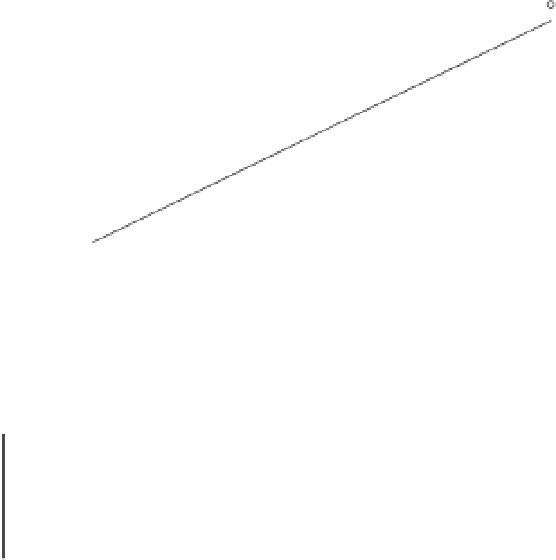Graphics Programs Reference
In-Depth Information
The intercept
a
and slope
b
of the interpolantcan nowbe determined fromEq. (3.19):
y
i
(
x
i
−
x
)
x
i
(
x
i
−
b
=
x
)
.
−
.
+
.
−
.
+
.
.
+
.
.
+
.
.
2
9(
1
7)
3
7(
0
7)
4
1(0
3)
4
4(0
8)
5
0(1
3)
=
0
.
0(
−
1
.
7)
+
1
.
0(
−
0
.
7)
+
2
.
0(0
.
3)
+
2
.
5(0
.
8)
+
3
.
0(1
.
3)
3
.
73
=
=
0
.
6431
5
.
8
a
=
y
−
xb
=
4
.
02
−
1
.
7(0
.
6431)
=
2
.
927
Therefore, the regression line is
f
(
x
)
=
2
.
927
+
0
.
6431
x
, which is shown in the figure
togetherwith the datapoints.
5.00
4.50
4.00
3.50
3.00
2.50
0.00
0.50
1.00
1.50
2.00
2.50
3.00
x
Westart the evaluation of the standard deviationbycomputing the residuals:
y
2
.
900
3
.
700
4
.
100
4
.
400
5
.
000
f
(
x
)
2
.
927
3
.
570
4
.
213
4
.
535
4
.
856
y
−
f
(
x
)
−
0
.
027
0
.
130
−
0
.
113
−
0
.
135
0
.
144
The sum of the squares of the residuals is
[
y
i
−
f
(
x
i
)
]
2
S
=
027)
2
130)
2
113)
2
135)
2
144)
2
=
(
−
0
.
+
(0
.
+
(
−
0
.
+
(
−
0
.
+
(0
.
=
0
.
06936
so that the standard deviationinEq. (3.15) becomes
0
S
n
.
06936
5
σ
=
m
=
2
=
0
.
1520
−
−























Search WWH ::

Custom Search